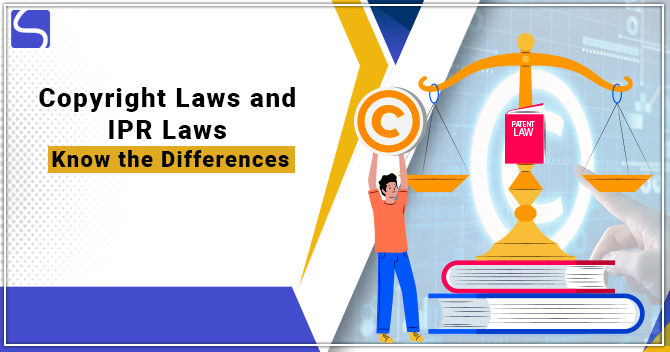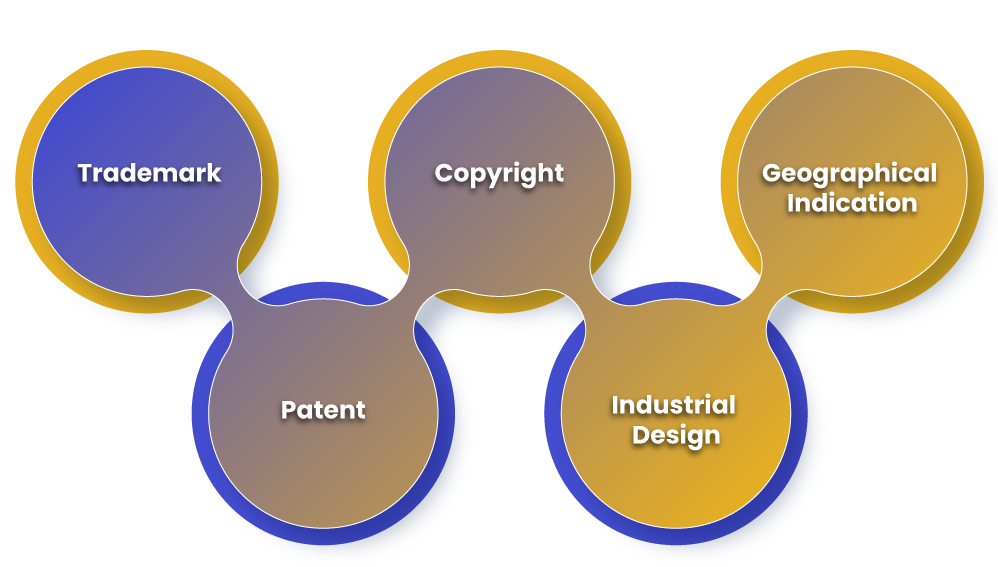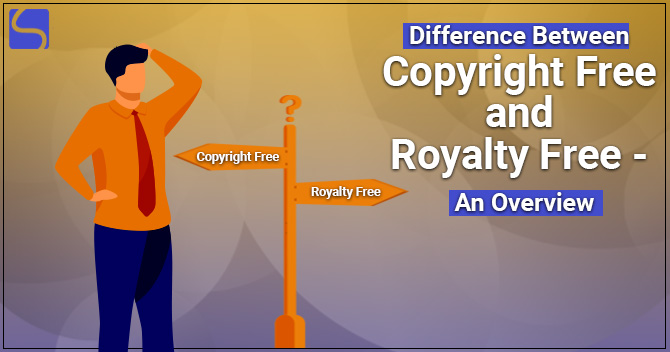Copyright Laws and IPR Laws – Know the Differences

Karan Singh | Updated: Sep 07, 2021 | Category: Copyright, Intellectual Property
Around the world, IPR or Intellectual Property Rights plays an essential role in safeguarding scientific, medical, and technological innovations. In India, several IPRs legislation has been passed to obey & deal with the obligations increasing due to the WTO (World Trade Organisation) Agreement on TRIPS or Trade-Related Aspects of Intellectual Property Rights. Intellectual Property Rights has become the fastest-growing legal sector, and therefore the demand for IPRs expertise has increased. The IPR dominion is immense & Copyright is a part of IPR. Scroll down to check the difference between Copyright Laws and IPR Laws.
Table of Contents
Meaning of Intellectual Property Rights and There Types
Before we discuss the differences between Copyright Laws and IPR Laws, it is essential to understand the meaning of IPR and their types. As per the WIPO (World Intellectual Property Organisation), IP refers to the formation of mind, namely invention or creation; literary, cinematography & artistic works; designs & symbols, names, and images used in industries or commerce.
Types of Intellectual Property Rights:

- Trademark: Section 2(1)(ZB) of the Trademarks Act, 1999 defines Trademarks. It is a logo, sign, symbol, or word that aids one company to differentiate their marks from other companies in the same market.
- Patent: Patent is an exclusive right that is granted in favour of the invention of a new product/service. The Patent Act, 1970 (Section 2(1)(m)) defines it.
- Copyright: It is also an exclusive right granted to the owner of the artistic works and literary works. Novels, films, music, computer programs, plays, painting, maps, etc., are covered in the range of artistic & literary work. In India, Copyright Act 1957 (Section 14) defines Copyright.
- Industrial Design: From the perspective of the ornamental element of an article that may be 3-D, 2-D, linear, etc. The Design Act, 2000 (Section 2(d)) defines this IP.
- Geographical Indication: As per WIPO, this relates to the origin of the product or having an exacting geographical origin. Geographical Indication defines in Section 2(1)(e) of the Geographical Indications of Goods (Registration & Protection) Act, 1999.
Difference Between Copyright Laws and IPR Laws
You can check the difference between Copyright Laws and IPR Laws (other IPRs) below:
- Copyright and Trademark
- This is one of the significant differences between Copyright Laws and IPR Laws. At present, people are more focusing on brand, and this represents how Trademarks & Copyright influence the purchasing behaviour of the clients. Therefore, it becomes crucial to know the boundaries between Trademark and Copyright clearly.
- The significant difference between Copyright and Trademark is that Trademark is enshrined under the Trademarks Act, 1999, whereas the Copyright is enriched under the Copyright Act, 1957.
- In Trademark, the owner has the right over their products and services, whereas, in Copyright, the owner has the special right to reproduce, sell, produce, etc.
- Trademark creates trust and brand value in the customers’ minds to get an edge over its opponents. On the other hand, Copyright acknowledges the basic set of work manufactured by the owner.
- In Copyright, the owner is permitted to stop others from distributing, copying, publishing, etc., the copyrighted work if done with the owner’s approval. Trademark allows the owner or holder to restrict others from using the same sign, logo, or mark.
- Copyright is a tool of Intellectual Property that safeguards the artistic & literary work of the owner or the producer. Whereas, Trademark grants an exclusive right to use the products & services without any obstruction.
- The duration of Trademark is too short as compared to Copyright duration. A trademark is valid for ten years that can be renewed further, while the Copyright is valid for sixty years.
- The symbol for Copyright is ©, and the symbol of a registered Trademark is ®, and the unregistered Trademark is ™.
- Copyright and Patent
- Copyright is a special right granted to the owner of artistic works & literary works. Plays, music, computer programs, maps, advertisement, etc., are under the range of artistic & literary work. Moreover, in Copyright, the expression shown is safeguarded and not the idea behind that expression, whereas, in the Patent, the idea is safeguarded.
- Unlike Copyright, Patent consent is a lengthy process and maybe time-taking; however, if the Patent is approved, the owner of such Patent shall have the exclusive right to use the proposed invention as per their requirements. It means the consent of the Patent allows the invention owner to have unobstructed authority over their invention. Another vital factor regarding Patent is that it will be transformed into a materialistic form that redresses the problems.
- A Patent is a legal right issued by the Government to protect the invention of the owner for a limited period. Copyright is a legitimate right giving the owner the right to distribute, publish, copy, etc.
- In Patent, the copying of the same is prohibited comprising selling revealing vital information regarding the patented article to the public, while in the Copyright, distributing and selling without the owner approval is prohibited.
- An artist or creator can claim Copyright over their actual work, while for Patent claiming is vital that the article for which the owner is looking for Patent shall not be available to the public.
- The significant difference between the Patent and Copyright is that Patent is governed through Patent Act, 1970, while the Copyright is regulated through the Copyright Act, 1957.
- The Copyright scope is limited because it applies to only artistic & literary works, whereas Patent applies to any type of invention, medical, technical, and other development.
- Copyright is granted for sixty years, while the Patent is valid for twenty years.
- Copyright and Industrial Design
- Both are subject matter that is safeguarded in the IPRs. Copyright is the special right of a person or a company over their creative & intellectual work. At the same time, Industrial Design grants the rights to the holder over the outer look of the product that can be 3-D, linear, 2-D, and so on.
- The ambit of Industrial Design is limited to the external appearance of the product.
- While in Copyright, artistic & literary work is safeguarded. The work here refers to the mind created in the artistic, scientific, and literary sectors. Similar to Industrial Design, there are a few things that are outside the Copyright purview; the official, legal, and other legislative documents; New telecasted by the news reporters & channels; operational processes & systems.
- Similar to Trademark and Patent, the time duration of Industrial Design compared to Copyright is much shorter. Industrial Design is safeguarded for five years, while Copyright is safeguarded for more than 60 years.
- Copyright and Geographical Indication
- The significant difference between Geographical Indication and Copyright is that Copyright is governed via the Copyright Act, 1957[1], whereas the Geographical Indication is regulated through the Geographical Indications of Goods (Registration & Protection) Act, 1999.
- In India, the Ministry that governs the Copyright is the Copyright Office, MHRD, while the Ministry that controls Patent, Design, Trademark, and Geographical Indications is DPIIT, Ministry of Commerce & Industry.
- The time duration for Geographical Indication is ten years, whereas the time duration of Copyright is sixty years.
Conclusion
After discussing the difference between Copyright Laws and IPR Laws, it is concluded that the Copyright is a part of IP. It still differs from other IPs, namely, Design, Patent, Trademark, and Geographical Indication. In IPR, two main categories are Industrial Designs (in this, all the IPs are included except Copyright), and the other category is Copyright. Therefore, Copyright is a category of IPRs, while the other Intellectual Properties, namely Trademark, Patent, Design, etc., are subcategories of IPR.
Read our article:Facilitating Technology Transfer: A New Feature of IPR














